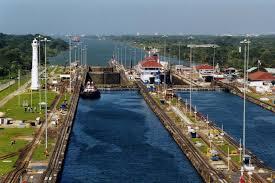The Panama Canal has structural and water problems
- Análisis

The Panama Canal Authority (PCA) has a media and public relations team that is the envy of other public entities in the Panamanian government. While the various offices with governmental responsibility in the tourism sector, for example, are barely managing to take off, the PCA has managed to create a stir on a global scale with their campaign regarding water.
The world, especially the maritime world, on which we all depend, is asking when the water will run out in the watershed of the Panama Canal. For years, the PCA has informed us that water is becoming scarce in the Gatun Lake, through which ships of up to 150 thousand tons navigate to cross the Isthmus. If one cannot imagine what this figure implies, a walk on the shores of the Canal in order to see them pass under the Bridge of the Americas, or some other viewpoint, leaves one both surprised and awestruck.
Currently a little more than 14 thousand ships go through the Canal in a year, an average of 40 ships each day. The biggest ones pay tolls of over a million dollars in order to make the passage. Recently Panama built a third group of locks in order for so-called “post Panamax ships” to go through.
When they approved the widening of the capacity of the Canal, they made careful studies on the watershed area and its production of water. Those who proposed the construction of the third lock presented studies indicating that the water would not be a limiting factor for the traffic of ships. Now they have changed their position. What has brought about this change?
The administration of the PCA indicates that their preoccupation with respect to the water available for the canal’s functioning is based on various factors. The principal ones are, on the one hand, the change of the rainfall pattern on the Isthmus of Panama. On the other hand, the growth of the urban conglomerate around the canal and the catchment areas that feed it with the precious liquid.
The basic problem of the Panama Canal is that it has not been managed in the way that its spokespersons have tried to convince Panamanians. For one thing, the wealth generated – in 2018 a total of US$3.6 billion – has not been managed in a transparent manner. In addition, the members of the board of directors have converted the PCA into an ‘umbrella’ for private business projects. Moreover, the water problem has become a ‘hot potato’.
With regard to the lack of transparency, it starts with the arrangement of the shipping companies that pass through the Panama Canal with the Citibank of New York where they deposit the toll payments. In addition, all or almost all of the members of the board of directors have projects that do not benefit the PCA. Finally, regarding water, the PCA has proposed various solutions that are scarcely convincing. Several years ago, the PCA announced that one of their plans was to dam the Indio River in order to increase the water in the Gatun Lake in the dry season (summer). This initiative, because of its political implications, has come to occupy a very low profile. Another solution was to limit the consumption of water of the population in Panama City that shares the precious liquid from the Chagres river basin with the canal. The proposal under consideration in recent decades is to bring water from the Bayano River (dammed in the 1970s) to the Gatun Lake.
Meanwhile, the PCA will renew the toll regime applied to ships (those more than 125 feet long) that pass through the canal. All ships will pay an additional tariff of US$10.000 for each passage and a variable tariff between one per cent and ten per cent, depending on the levels of Gatun Lake at the time of their passage. If the level is high, they will pay a lower toll and vice-versa.
In spite of these arrangements, the problem – in the medium and long term – is still serious. There is a structural problem of corruption generated by the (rentier and speculative) political economy of the country and a technical problem that has to do with the provision of water. To find the key to the success of the canal in the XXI century, both problems must be resolved.
January 23 2020
(Translated for ALAI by Jordan Bishop and Joan Remple Bishop)
- Marco A. Gandásegui, Jr, is a professor of sociology with the University of Panama and Associate Investigator with the Centro de Estudios Latinoamericanos Justo Arosemena (CELA)
https://marcogandasegui19.blogspot.com/
Del mismo autor
- La pandemia no es el fin del capitalismo 23/04/2020
- Hay que masificar las pruebas contra un virus clasista 19/04/2020
- ¡Qué falta hacen los Comités de Salud de J. Renán Esquivel! 09/04/2020
- La desigualdad social y la desconfianza contribuyen a la epidemia 02/04/2020
- Hacen falta más ‘pruebas’ para ‘suprimir’ el coronavirus 26/03/2020
- La crisis del capitalismo y el coronavirus 19/03/2020
- Urge una movilización general para atacar el corona-virus 12/03/2020
- Se necesita liderazgo y transparencia para enfrentar el corona-virus 05/03/2020
- EEUU veta relaciones entre Panamá y China 27/02/2020
- Roberto Arosemena, sus ideas perduran y sus luchas continúan 20/02/2020
